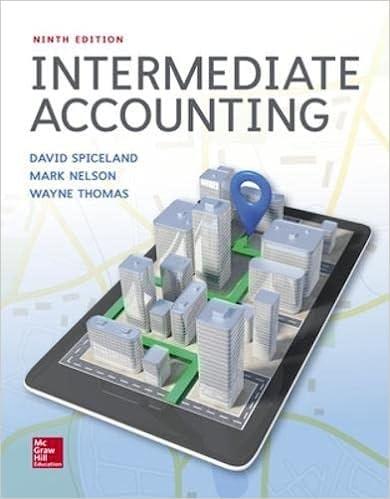Companies can choose the fair value option for investments that otherwise would be accounted for under the
Question:
Companies can choose the fair value option for investments that otherwise would be accounted for under the equity method. If the fair value option is chosen, the investment is shown at fair value in the balance sheet, and unrealized holding gains and losses are recognized in the income statement. However, exactly how a company complies with those broad requirements is up to the company. This problem requires you to consider alternative ways in which a company might apply the fair value option for investments that otherwise would be accounted for under the equity method.
On January 4, 2018, Runyan Bakery paid $324 million for 10 million shares of Lavery Labeling Company common stock. The investment represents a 30% interest in the net assets of Lavery and gave Runyan the ability to exercise significant influence over Lavery's operations. Runyan chose the fair value option to account for this investment. Runyan received dividends of $2.00 per share on December 15, 2018, and Lavery reported net income of $160 million for the year ended December 31, 2018. The market value of Lavery's common stock at December 31, 2018, was $31 per share. On the purchase date, the book value of Lavery's net assets was $800 million and:
a. The fair value of Lavery's depreciable assets, with an average remaining useful life of six years, exceeded their book value by $80 million.
b. The remainder of the excess of the cost of the investment over the book value of net assets purchased was attributable to goodwill.
Required:
1. Prepare all appropriate journal entries related to the investment during 2018, assuming Runyan accounts for this investment under the fair value option, and accounts for the Lavery investment in a manner similar to what it would use for securities for which there is not significant influence. Indicate the effect of these journal entries on 2018 net income, and indicate the amount at which the investment is carried in the December 31, 2018, balance sheet.
2. Prepare all appropriate journal entries related to the investment during 2018, assuming Runyan accounts for this investment under the fair value option, but uses equity method accounting to account for Lavery's income and dividends, and then records a fair value adjustment at the end of the year that allows it to comply with GAAP. Indicate the effect of these journal entries on 2018 net income, and indicate the amount at which the investment is carried in the December 31, 2018, balance sheet. You should end up with the same total 2018 income effect and same carrying value on the balance sheet for requirements 1 and 2.)
Common StockCommon stock is an equity component that represents the worth of stock owned by the shareholders of the company. The common stock represents the par value of the shares outstanding at a balance sheet date. Public companies can trade their stocks on... Balance Sheet
Balance sheet is a statement of the financial position of a business that list all the assets, liabilities, and owner’s equity and shareholder’s equity at a particular point of time. A balance sheet is also called as a “statement of financial...
Step by Step Answer:

Intermediate Accounting
ISBN: 9781259722660
9th Edition
Authors: J. David Spiceland, James Sepe, Mark Nelson, Wayne Thomas





